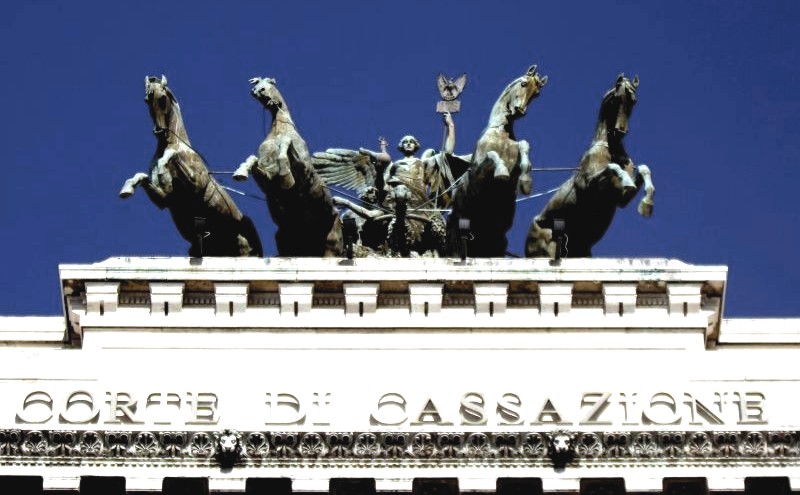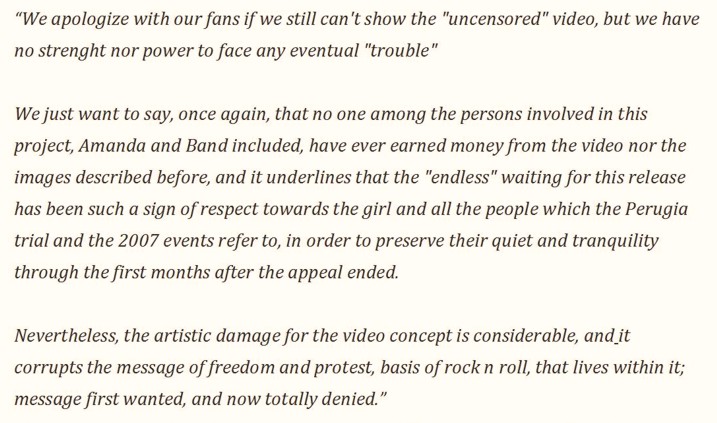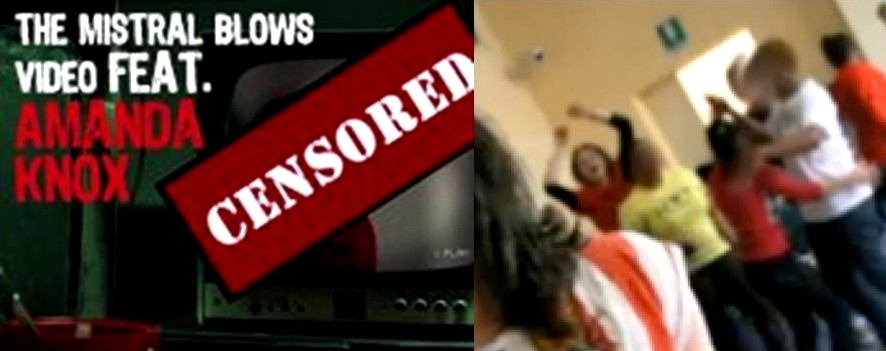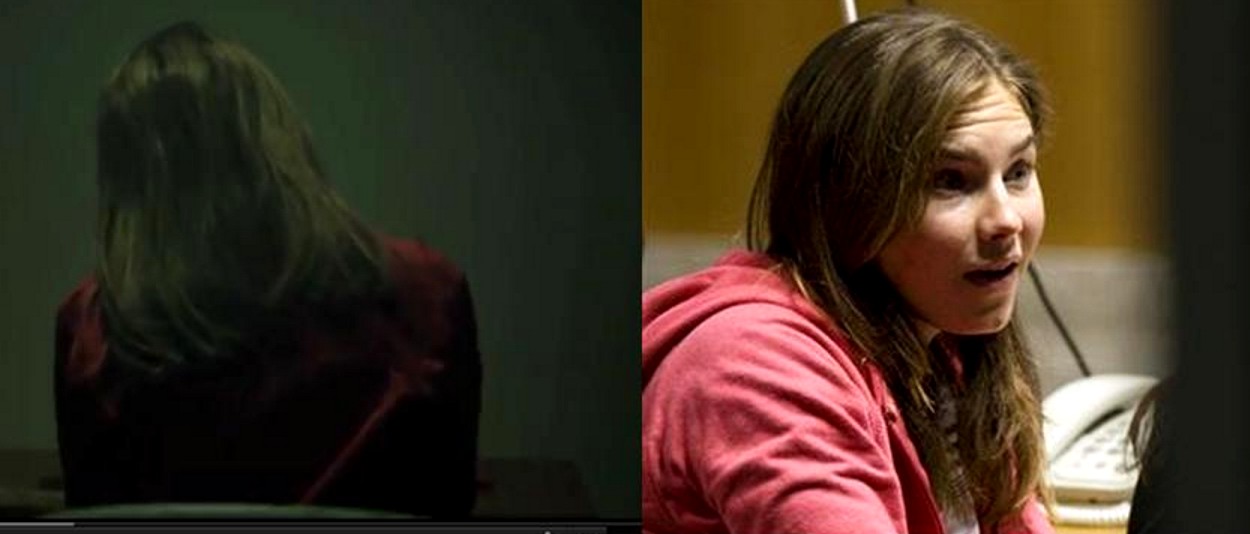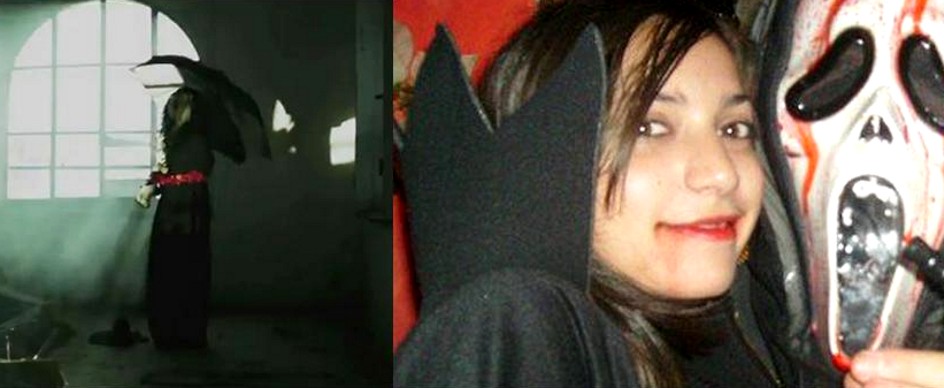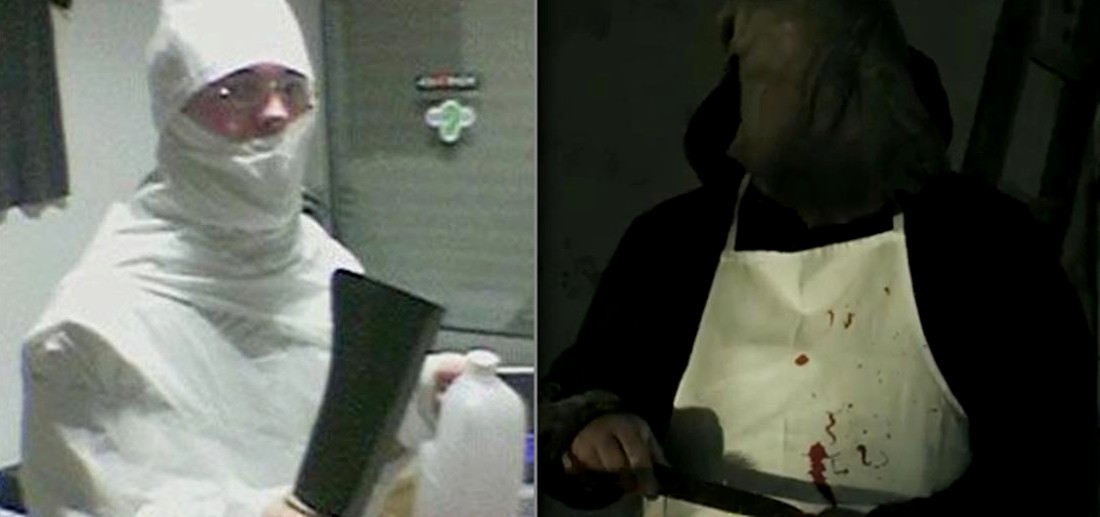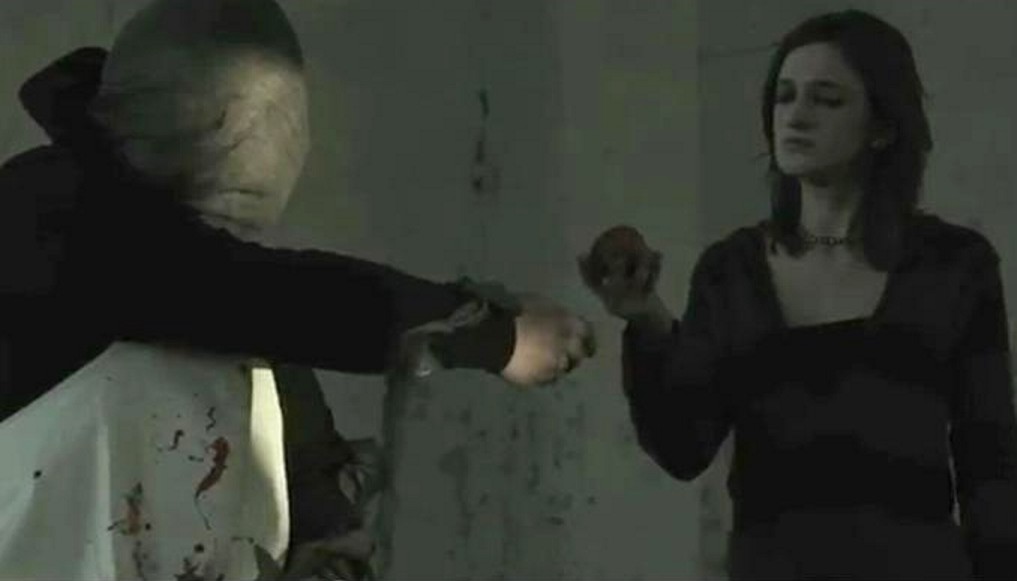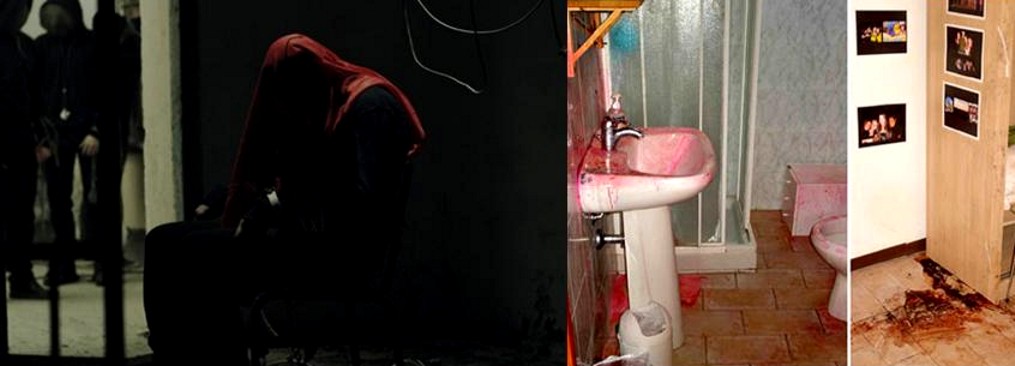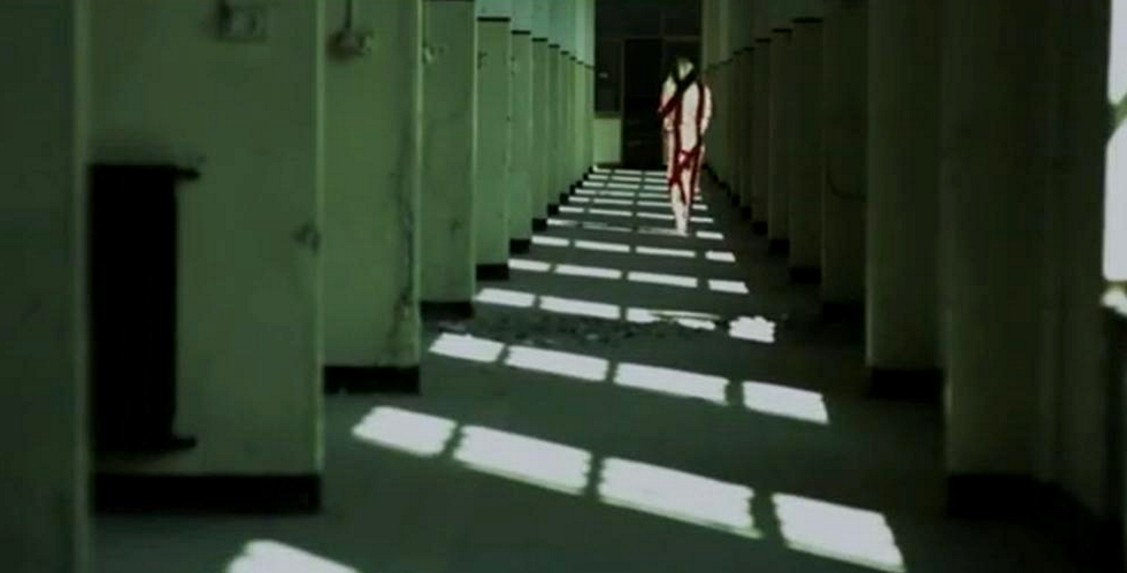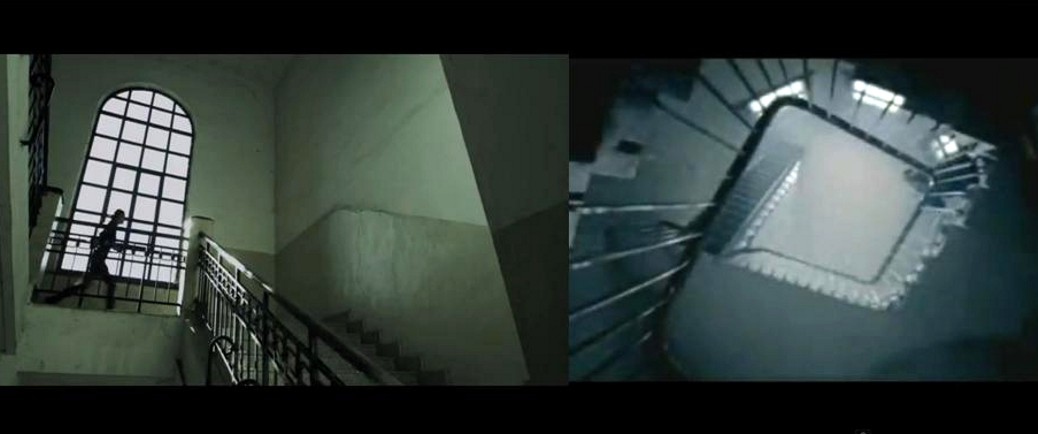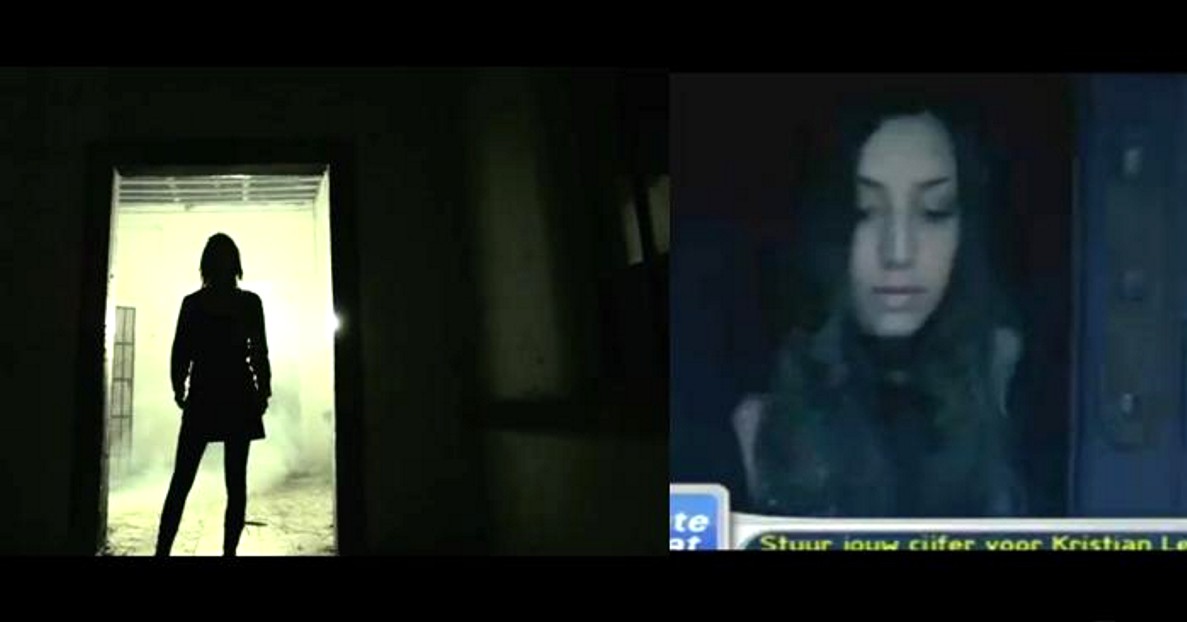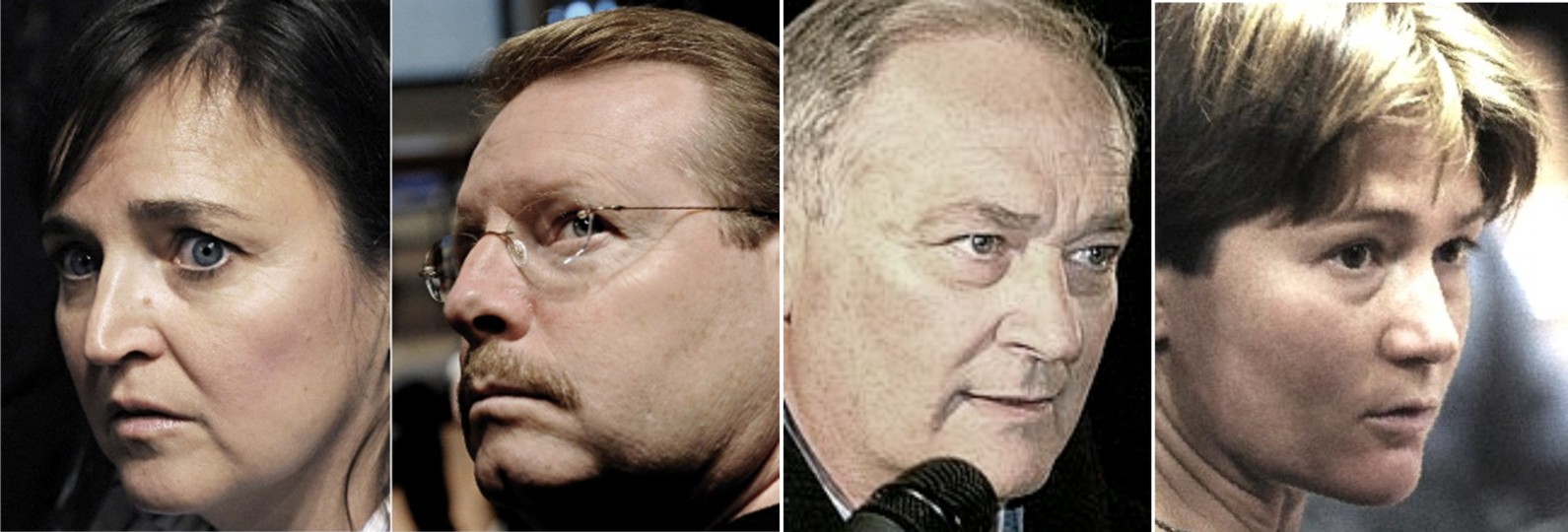
Category: Amanda Knox
Thursday, August 16, 2012
An Overview From Italy Of The Galati-Costagliola Appeal To The Supreme Court Of Cassation
Posted by Machiavelli
Dr Giovanni Galati is the Procurator General of Perugia, and one of the two magistrates at the highest function currently working in the Region of Umbria.
Until early 2011 he worked in Rome as a Procurator General at the Supreme Court of Cassation in Rome. His life and career had nothing to do with Perugia. A native of Calabria, he spent the last and most important part of his career in Rome, and moved to Perugia only quite recently.
Working as a deputy chief prosecutor at the Supreme Court of Cassation, he developed an expertise as a “cassationist” magistrate. That means specialized in legitimacy issues, and in this role he handled several high profile cases. Among them was the recent one of Salvatore Cuffaro, the former governor of Sicily, now in jail.
Cuffaro was convicted for having favored the mafia and was sentenced to seven years. The governor was found guilty by the appeal court, but Galati impugned the sentencing by the Supreme Court on one specific aspect: while he agreed Cuffaro was guilty, he considered there was only evidence of common crime, while the lower courts failed to provide the legal requirements for proof of the aggravating circumstance of the mafia-related kind of crime.
In Galati’s opinion, Cuffaro was still corrupt and a criminal, and the difference may seem like a minor detail. His conclusion was not to overturn the verdict, but only to reduce the aggravating circumstance and shorten the prison term. Galati made the point and won, the Supreme Court cut one and a half year off Cuffaro’s prison term.
One thing to note is that the majority of Galati’s recourses are appeals in favor of the defendant. The Prosecution General, the office that brings cases to the Supreme Court, deals with procedure and legitimacy issues. Its aim is to ensure consistency and quality of work of the criminal courts.
It does not deal directly with the merit of evidence, but in fact, since the assessment of the evidence is a matter of internal logical consistency and consistency with trial actions, as well as respecting of procedure and of Supreme Court jurisprudence, the scrutiny of the lower court’s process obviously indirectly involves an assessment of the quality of evidence, and on the quality of the lower court’s reasoning on all factual points.
Giancarlo Costagliola was of course the lead prosecutor for the Hellmann-Zanetti appeal.
2. About the appeal
The Galati-Costigliola appeal is a 112-page document, with citations in an appendix to each chapter remanding to trial documents (technically the cited documents have to be considered included in the submission). The Supreme Court of Cassation however will have the entitlement of going through the whole trial documentation.
The Galati-Costagliola Appeal to the Supreme Court immediately looks different in quality and content from the previous court documents that we have seen up to now on the case. As we read it in Italian, it looks well written (except for a few grammar mistakes in the Latin parts) and stylistically homogeneous.
It dedicates extensive parts to the philosophy of law, and it includes several quotes of Supreme Court jurisprudence in the introductory and conclusive chapters.
It is an unusual appeal. Contrary to most appeals submitted by Galati as Procurator General, this one does not raise objections simply on parts of the sentencing, conclusions, or points of reasoning. Instead it attacks the verdict in its entirety. It attacks indeed all logical points and conclusions, including the part about calunnia, for which Knox was found guilty. And it goes even beyond.
Besides disputing the single points on the merit, it contains an explicit and more general attack on the whole appeal court’s approach to the case, against the general quality of their reasoning and their handling of trial and procedure, as well as against even their behavior even before the beginning of the trial discussion. There is an introductory part, and one conclusion part, which are dedicated to this kind of general criticism toward the entirety of the judges’ work.
At the beginning the document presents the summary of the ten reasons for appeal which, in Galati-Costagliola’s opinion, fatally affect the legitimacy of the judgment.
The ten questions of merit are the following:
1. The illegitimacy of Hellmann’s admission of new expert witnesses (Vecchiotti and Conti). The appointing of new experts violates the code. Galati-Costagliola clearly explains why, using both Supreme Court jurisprudence and Criminal Procedure Code. It addresses and shows the multiple instances of lack of reasoning in Hellmann’s explanations on the point, the “contradictory nature of reasoning” and its “manifest illogicality” in light of the law.
2. The failure to acquire elements of evidence. Galati-Costagliola focuses specifically on the rejection of witness testimonies, above all 1) the refusal to again hear the witness Aviello, and 2) the refusal of new tests on the knife. These decisions were taken in violation of Articles 190, 238 paragraph 5 and 495 paragraph 2 of the Criminal Procedure Code, and in violation of Article 606 (c) and (d) of the Criminal Procedure Code. There is manifest illogicality of the judgment on the point.
3. The establishing of the unreliability of the witness Quintavalle. The method declared to assess reliability of the witness violates the jurisprudence of the Supreme Court on the topic, and the insufficient reasoning violates Article 606(b) and (e) of the Criminal Procedure Code.
4. The establishing of the unreliability of the witness Curatolo. The reasons expressed are illogical, prejudicial, and violate the Criminal Procedure Code.
5. The claimed timing of the death of Meredith Kercher demonstrates a manifest illogicality in the reasoning, contains an unfounded assessment, and is manifestly in contrast with other court documentation of the case. The internal and external inconsistencies of Hellmann’s statements on the topic constitute a violation of the Criminal Procedure Code.
6. The genetic investigations: coverage of this topic in Hellmann’s sentencing report demonstrates deficiency in the reasoning, and inconsistency and illogicality [Article 606(e) Criminal Procedure Code]
7. The analysis of the prints and traces (stains) demonstrates deficiency in the reasoning, and a contradictory nature and illogicality in the reasoning [Article 606(e) Criminal Procedure Code]
8. The presence of Knox and Sollecito at Via della Pergola on the night of the murder: misrepresentation of the evidence presented is demonstrated and illogicality of the reasoning [Article 606 paragraph 1(e) Criminal Procedure Code]. Violation of procedural rules and illogicality of the reasoning [Article 606 paragraph 1(b) and (e) Criminal Procedure Code] are demonstrated.
9. The staging of the break-in (simulation of a crime): demonstration of deficiency in the reasoning and manifest illogicality of the same [Article 606(e) Criminal Procedure Code]
10. The exclusion of aggravation in the calunnia offence: the contradictory nature or manifest illogicality of the reasoning is demonstrated, also defects resulting from internal and external inconsistence with the court documents of the case: starting with the declarations by Patrick Diya Lumumba, and those by the accused, Amanda Knox, and the contents of the conversation between the latter and her mother on 10 November 2007 [Article 606(e) last part, Criminal Procedure Code].
However, the ten reasons listed above are not all of Galati-Costagliola’s arguments. Their explanations cover the core (80%) of the Hellmann-Zanetti sentencing document. But even before entering into these reasons on the merit, Galati-Costagliola make a preliminary point, a “premise” to the whole document.
The “premise” takes twenty pages and this alone is telling about the gravity of the criticism Dr Galati is going to make throughout the whole appeal document. The premise warns the readers (the judges of the Supreme Court) that in fact there is a problem of quality pervading the whole of Hellmann’s and Zanetti’s work which affects deeply their reasoning and conclusions on multiple occasion and in multiple concurring ways.
He makes clear that his criticism of Hellmann is methodological, and he points to the trial as a whole from the roots, far beyond the single topic of errors exposed in the appeal.
The “premise” of preliminary points, a short essay in itself, has its own summary of six points, each one to explain a typology of recurrent error committed by Hellmann and Zanetti. In the premise Galati explains four of the types of error, while the last two are discussed in the further chapters together with some of the points on the merit.
These are the six types of error:
1. One error “of method” affecting the logical process is the “petitio principii”, which Galati-Costagliola addresses as a recurrent, structural and pervasive method of reasoning used by Hellmann-Zanetti.
It is “begging the question”, a kind of empty circular reasoning. This is demonstrated in several chapters and points. For Hellmann-Zanetti’s reasoning, Galati-Costagliola reserve the names “paradoxical”, “disconcerting”, “useless”, “circular”, and worse in this same tone.
2. The failure to apply the inferential-inductive method to assess circumstantial evidence. This is a key point based on jurisprudence and is in fact a devastating general argument against Hellmann-Zanetti:The appeal to Cassation’s jurisprudence on the circumstantial case originates from the fact that the Assize Appeal Court did not deploy a unified appreciation of the circumstantial evidence and did not examine the various circumstantial items in a global and unified way.
With its judgment it has, instead, fragmented the circumstantial evidence; it has weighed each item in isolation with an erroneous logico-judicial method of proceeding, with the aim of criticizing the individual qualitative status of each of them ..
Dr Galati accuses the appeal court of focusing on the quality of some pieces of circumstantial evidence, instead of their correlation to each other as the Supreme Court always requires. .The appeal judges, in actual fact, deny that the probative reasoning and the decisive and cognitive proceeding of the court is to be found in the circumstantial evidence paradigm of the hypothetico-probabilistic kind, in which the maxims of experience, statistical probability and logical probability have a significant weight.
The court must reach a decision by means of the “inductive-inferential” method: it proceeds, by inference, from individual and certain items of data, through a series of progressive causalities, to further and fuller information, so arriving at a unification of them in the context of [13] the reconstructed hypothesis of the fact.
This means that the data, informed and justified by the conclusions, are not contained in their entirety in the premises of the reasoning, as would have happened if the reasoning were of the deductive type “¦ (..) A single element, therefore, concerning a segment of the facts, has a meaning that is not necessarily unambiguous.
Dr Galati cites and explains further:
The Perugia Court of Appeal has opted, instead, precisely for the parceled-out evaluation of individual probative elements, as if each [14] one of them must have an absolutely unambiguous meaning, and as if the reasoning to be followed were of the deductive type.
This error emerges from the text of the judgment itself, but the gravity of the error committed by the Court in its decision derives from the fact that even the individual elements had been acquired by the cognitive-decisioning process in a totally partial manner, isolating the sole aspect that allowed the recognizing of doubts and uncertainties in the element itself..
So Galati-Costagliola concludes ““ and this by now is obvious ““ that the Hellmann-Zanetti court followed a “deductive only” paradigm on pieces in isolation, instead of the “inferential-inductive” paradigm prescribed by Supreme Court requirements (1995).
Moreover, Hellmann-Zanetti applied a deductive paradigm of assessment only to some cherry picked aspects of the single isolated pieces of evidence, overlooking other qualities of the single piece (an example ““ my own ““ is the possible “contamination” of the bra clasp found on the floor in the murder room.) Ordering an assessment of the quality of any element as if it was a proof in isolation from the rest of the evidence is itself unlawful.
But Hellmann”“Zanetti also picked out of the evidence one aspect alone, for example it points to the theoretical possibility of contamination by touching from gloves, but does not consider the negative check results from the possible contamination sources. The interpretation of X-DNA from the bra-clasp by Vecchiotti in the conclusion is worded as if to ignore the results on the Y-haplotype, and so on.
So even single aspects/qualities of isolated items are further isolated from other aspects by Hellmann-Zanetti, and are assessed without looking for a relationship to the context. This is a core violation of the basics of jurisprudence in cases based on circumstantial evidence.
3. Refusal to acquire documentation as evidence: the definitive Guede verdict. Hellmann-Zanetti refused to acquire the documentation and to consider it a piece of evidence, without any backing from procedure jurisprudence and without providing any justification.By doing this the Hellmann court was again violating the legal boundaries. The Galati-Costagliola appeal considers this as one more type of violation, the refusal to attribute any kind of probative value to the definitive verdict on Guede, thus violating Article 238 of the Criminal Procedure Core, and bringing up a manifestly illegitimate justification. The violation is quite egregious under the code.
4. Failure to assess and to weight key elements, among which is Knox’s written “memoir”. This is a severe violation of article 237 of the Criminal Procedure Code.The usability of Knox’s “memoir” as well as its probative value were already established by the Supreme Court itself, and it was admitted into the process. Hellmann-Zanetti fail to provide the slightest logical explanation for changing the established assessment and disregarding that evidence.
5. The failure to acquire possibly important pieces of evidence. Galati-Costagliola are focused mainly on two points: 1) the knife, and the refusal of having it further tested for DNA; 2) the refusal to hear Aviello after his retraction of his claims.We know that, while the testimony of Aviello might be just not credible because of his proven unreliability, and while some may argue that thus his testimony was not “decisive”, the testing of DNA found on the knife would be a piece of evidence for sure.
But the Procurator General points out that the refusal to hear Aviello is part of a severe violation, because the Hellmann motivazioni accepts his retraction statement, considering it thus reliable, but throws out some parts of it and refuses to hear him as a witness.
So the Galati-Costagliola appeal statement includes quotes of some shocking lines from Aviello’s interrogation, to show the heavy nature of it that cannot be thrown out without assessment
A twisting of words - like “cutting-edge” which becomes “experimental” in Hellmann’s reasoning - is the illogical justification for Hellmann-Zanetti forbidding a further DNA test. The motivation is obviously bogus, and Galati backs the point with quotes from Novelli’s tehnical explanation.
6. Galati-Costagliola address a pervasive violation, claiming it recurs multiple times in the document: a violation of a kind called “misrepresentation of the evidence”.This is when the judge omits aspects of the pieces of evidence that would contradict their conclusion, expressing an obvious cognitive bias. The appeal describes this violation in different chapters (5,6,8) as occurring in the process of assessing different pieces of evidence, including witness reports, wiretappings, and other items.
3. My own assessment of the Galati appeal
As you can guess from the summary above, the appeal is rather strong, and explains many heavy implications in Italian jurisprudence so that it would be difficult for the Supreme Court to reject it.
Difficult not only because the kind of objections raised by Galati-Costagliola are devastating to Hellmann’s legitimacy (in fact it’s even more, they tend to form a picture of manipulation of the trial); and not only because Hellmann’s verdict appears to be devastating to jurisprudence generally, so much so that it would become impossible to rule on guilt in many other cases; and not only because a verdict that puts together the conviction for calunnia (a felony crime with malice) and the acquittal for murder, has a contradiction on a macro-level.
But also diificult because the same office of Cassation has already issued another definitive verdict, on the Rudy Guede case. They acknowledged that Guede did not act alone, and the Supreme Court themselves even obtained independently some elements of evidence of this, which had not been considered by the previous judges.
Accepting Hellmann-Zanetti and rejecting Galati would equate to cancel Guede’s verdict. It would require a re-write of the entire process from scratch.
Galati-Costagliola shed light on many points in good order, so I tend to be optimistic and confident in the strength of the appeal.
However I also believe there could have been something more, to make it even more strong. There are a few points ““ in my opinion - still missing, which I would have added. Four points that I miss are the following:
1. There is no mention about the analysis ““ or the lack thereof - of Knox’s lies, aka the inconsistencies in her story, her “mop-shower” alibi version, what she told prior to her false accusation. There was a partial analysis of this area of evidence in Massei, who only mentioned her lying about her behavior before Meredith’s closed door.
But a lot more could have been brought out, so many contradictions and so sharp, to demonstrate that her recollection was entirely fictional. The entire topic disappeared in Hellmann’s logic and Galati-Costagliola does not hit on the point. I think this obliteration of key evidence should have been a battlefield for the appeal, I think it could have been linked to the error of misrepresentation of the evidence.
2. Galati-Costagliola misses one point of criticism on the bathmat footprint assessment. It does make a point objecting to the manifest illogicality of Hellmann’s reasoning on the footprint analysis. But there is one point more where it could hit, one external inconsistency that could have been highlighted:Hellmann-Zanetti’s illogical reasoning on the footprint is based on a false assumption. Not only it has no basis in the acts of evidence but it is proven false. It is that Hellmann excludes Sollecito on the basis that the print was “inked” by stepping on a flat surface (proven false), and attributes it to Guede, on the opposite assumption that it was produced by immersion. I note that Galati does not address directly this introduction of false premises.
3. The appeal deals only partly with the Vecchiotti-Conti report controversy. It points to Hellmann’s contradiction on “contamination” of the knife and their failure to indicate any path for any contamination in general. But it does not say much about the bra clasp (it implies however that Sollecito’s DNA was found).Vecchiotti’s report is unacceptable when it comes to the DNA chart: it acknowledges that Sollecito’s DNA was on the clasp after all when it comes to the Y-haplotype, but in the autosome-chromosome analysis attempts to create confusion by applying principles that are incompatible with Supreme Court guidelines on evidence analysis. Also Vecchiotti desecends into inconsistency and shows her real cards when she attempts to figure out contamination paths for how Sollecito’s DNA had arrived on the clasp.
However, I think the SCC might have all the material on this point in the attachment documents from Galati.
4. One missing point important to me is that Galati-Costagliola does not point out the prejudicial and racist stance declared at the beginning and at the core of Hellmann’s reasoning.Other parts are maybe more outrageous and more directly offensive to other people and other intelligences, but the racist Hellmann’s reason to me is the most disgusting.
It is a shame that a judge of the Republic is allowed to write things like this. Hellmann-Zanetti write that it is itself “unlikely” ““ it would require a very special proof ““ that Guede and Knox/Sollecito could have just met and done something together because they are “different”, while Sollecito and Knox are “good fellows”
Hellmann-Zanetti could have legitimately used the argument that it was likely for Guede to have committed a crime alone because he had a police record. They could have used this argument, but they did not use it. Their wording was totally different. I think we can guess what the reason is why they didn’t use this argument. It would have been extremely weak.
There is a logical connection between a theoretical break in and the theft in the law firm; this logical connection is equal to (in fact much weaker than) the logical connection between a staged break in and a roommate. But there is no logical connection between crimes like a theft of a laptop in an apartment and assaulting, torturing and killing a woman: thousands, in fact hundreds of thousands, of common thieves, in Italy, do not rape and do not kill anyone.
You cannot use the criminal record of Rudy Guede as a basis for claiming it is “likely” that he could commit a crime of this kind alone. That’s why Hellmann-Zanetti didn’t use it.
Instead, they used prejudice, the racist card: instead of trying to explain why it was likely that Rudy could have done it alone, they decided to claim that it was unlikely that they would find themselves together, because they are “good fellows” (and “different”).
As you can understand, this has nothing to do with Rudy’s criminal record.
By the way, Hellmann-Zanetti know that Knox had been knowing Guede long before she became friends with Sollecito, they already knew that Knox and Guede have been seen together on more than one occasion in more than one place, and even that Guede in fact attended the cottage and was friends with other people in the cottage. In fact they knew Guede and Knox used to attend the same places, house, roads and pubs.
They also knew that both Sollecito and Guede attended Piazza Grimana and the drug circle (which is the square in front of the school where Amanda had her language classes), that they lived 150 meters from each other, walked every day the same road; and ate at the same bars.
It was also known that not only Guede alone, but both Knox and Sollecito had questionable aspects in their personalities, so that these 20-years olds were not exactly expressing a profound stability in their lives.
They knew details like: leaving university, abandoning a job after one day, public disturbance fines, drunk parties, pouring beer glasses on the heads of unknowns, flirting with clients, relational problems with roommates and other girls, bringing several men at home causing arguments with roommates, collecting violent porn, heavy drug abuse over the years, knife collecting, a possible suicide mother, a lonely childhood and introverted character under the attention of a college director, memory voids.
Nobody is perfect. These details do not mean someone is guilty of anything. But what exactly is, in Hellmann-Zanetti’s mind, the “difference” of these personalities that makes these two be so obviously “good fellows”, as opposed to Guede, to the point that it is “extremely unlikely” that they can be found together, despite the fact that they attend the same places every day?
Who can tell me what is the possible reason of this difference?
Maybe there could be a relation with the fact that in Italian “good fellows” ““ “bravi ragazzi” means, in the subtext ” my family” as opposed to the other who is an outsider.
To my eyes this reasoning of Hellmann-Zanetti turns them into individuals who deserves no respect, they gain with this the most justified contempt, they should be treated like pigs: they practically wrote “they can’t be around together with Guede because they are our friends” while “he is out”.
Two bastards dirtying my country by wearing the robes of judges. I find this disgusting. It is unfortunate that Galati-Costagliola overlook this point.
4. The Galati appeal: my final thoughts
It is not possible to understand in depth the 10 points of merit from my short summary, which in fact is just a list. By reading them, I think they show their inner logical strength. I found only one weakness, that is in one of the sub-sections of point 5, where Galati-Costagliola discuss about Guede’s skype call.
I feel it’s remarkable that I couldn’t find any other questionable point (I am rather severe).
Reason 8 appears made of several points each with a different topic. They didn’t seem especially important to me as pieces of evidence, however they exist and are part of Galati-Costagliola criticism of Hellmann’s reasoning.
Reason 9 is effective but I would have used much more extensively the elements of evidence available and place them in line before the judge’s faces. Galati-Costagliola prefer to direct their objection to the inconsistence of Hellmann-Zanetti.
The part where Galati sounds more outraged is Reason 10, about the Calunnia. In this part in fact Hellmann sounds most “FoA” and offensive. In fact I think I have never read before a Cassation recourse so scathing as the Galati-Costagliola document seems to be on the Hellmann’s report.
Reading through the whole Galati document in Italian, you come upon expressions addressing the lower court’s work (repeatedly) with terms like “grave error” and “grave behavior”, you find also “disconcerting shallowness”, or the accusation of “ignoring the law”.
In the C&V report section Galati-Costagliola have some sarcastic lines such as: “how is it now they suddenly have become experts?”. In other parts you read the word “prejudice” or “obvious bias”, some of the parts of the Hellmann-Zanetti report are called “offensive” and “gratuitous”, and you also encounter the term “insinuation”.
Galati-Costagliola devolve significant attention to their method error in logic called “petitio principii”. Now, in the traditional scholarly logic, there is a list of thirteen kind of typical “logical errors” divided in three groups: the errors of the kind “fallacia in voce” (due to misusing words in their meaning concepts) , “fallacia in re” (about getting facts wrong in the direct logical use of them) and “fallacia in deductione” (error in inference process): there are four types of “fallacia in re” and five types of “fallacia in deductione”.
The “petitio principii” (implicit circular reasoning) is one of the five types of “fallacia in deductione”. Galati-Costagliola focus on this and on another case of “fallacia in re” called “corax”, but in fact in Hellmann-Zanetti there are also severe cases of logical errors of other kinds of “fallacia in deductione” and of the kinds of “fallacia in re”. Which may not matter too much.
This was my final thought. I hope this can help readers to gain a rough idea of what the Galati-Costagliola Appeal to the Supreme Court looks like, its structure, its kind of arguments, and assess its qualities.
If the Supreme Court of Cassation accepts the appeal, I would consider the battle for justice in this case as won. I know that the Kerchers may need to see the end of the whole process. But to me, the fact of having the Galati-Costagliola appeal means itself half victory achieved.
This document, as you know, was issued by the highest magistrate in Umbria and what will remain in history is the forcible assertion that Knox and Sollecito are murderers beyond any doubt as expressed by Dr Galati in this document and elsewhere, as well as his outrage for the disgusting Hellmann-Zanetti trash-verdict.
This stance will never go away.
Friday, July 27, 2012
Heads-Up To The Amanda Knox Forces: A Case Showing How Closely The US and Italian FBIs Co-operate
Posted by Peter Quennell
Meet Doctor Mark Weinberger.
That report about his arrest in Italy was broadcast in 2009. We last posted on him here.
Weinberger was apparently a wildly successful doctor who ran a sinus clinic in Indiana and lived a wildly affluent lifestyle a few milers north outside Chicago. In 2004 he disappeared off his large yacht which was then anchored at a Greek marina, and for six years his (very impressive) wife Michelle presumed he was dead.
In the meantime she had found out that he had actually been running a huge fraud, scamming health insurance and the US government via false billing and unnecessary surgery (often botched) for many millions. And that far from being left comfortably off, she was financially wiped out.
In 2006 in absentia she divorced Weinberger and started over.
In 2009 Weinberger was captured in the Alps by the Italian equivalent of the FBI and returned to the United States as soon as his extradition was requested. In perhaps 99 percent of all US-Italian extradition cases, the fugitives are handed over by both governments very promptly. This sure wasn’t any exception.
Weinberger began to lose the first of numerous civil suits a year ago, and on wednesday he pleaded guilty to 22 criminal charges in federal court.
His prison term is set at ten years.
One moral of the tale apparently still not learned by Steve Moore and Bruce Fischer and their hapless ship of fools, so desperate for approbation, is this: much or most of the time it is the fine Italian equivalent of the FBI that they are misrepresenting and defaming.
In the past two weeks alone, we have seen new ramblings by Saul Kassin and Nigel Scott (engineered by Bruce Fischer) that to any informed lawyer are quite crazy. Kassin and Scott clearly didnt have the slightest idea WHO they were defaming or accusing of crimes.
Or how much more determined thier defaming makes the Italian FBI and other law enforcement agencies and the courts to give Amanda Knox (or Curt Knox or Edda Mellas) no special breaks.
The daffy Steve Moore first introduced this confusion way back here. And of course Bruce Fischer, Curt Knox’s hotheaded chief hatchet man, sustains it up to this day.
Eighteen months ago, Chris Mellas (whose business in Seattle is doing well) sensibly recommended from Perugia that the Knox campaign should finally acquire some cool heads and some REAL experts, and toss the trouble-making grand-standers they had acquired over the side.
Perhaps predictably, Curt Knox (whose business in Seattle is doing badly) reacted red-faced and steaming, and shot this seemingly quite smart idea down. So the abrasive, misleading, very amateur campaign goes on.
***
Added. We are now told that Frank Sforza and David Anderson are in Seattle, and Sollecito will be there soon, to actually jack up the level of defaming in the RS and AK “we were the victims” books being written.
Wow. THAT is Curt Knox’s end-game?l He ran that one past Chris Mellas? It seems universally believed in officialdom in Rome and Perugia that Curt Knox KNEW all along that Amanda did it. Apparently with good evidence.
What will he do if they charge him?
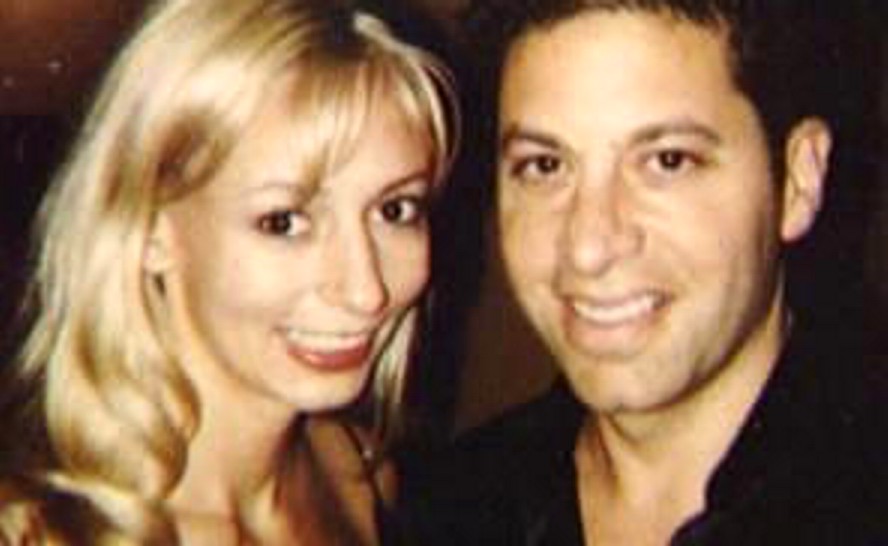
Wednesday, July 04, 2012
The Hands Of Time Video With Screenplay By Amanda Knox - A Confessional Obsession?
Posted by Fly By Night & Thundering
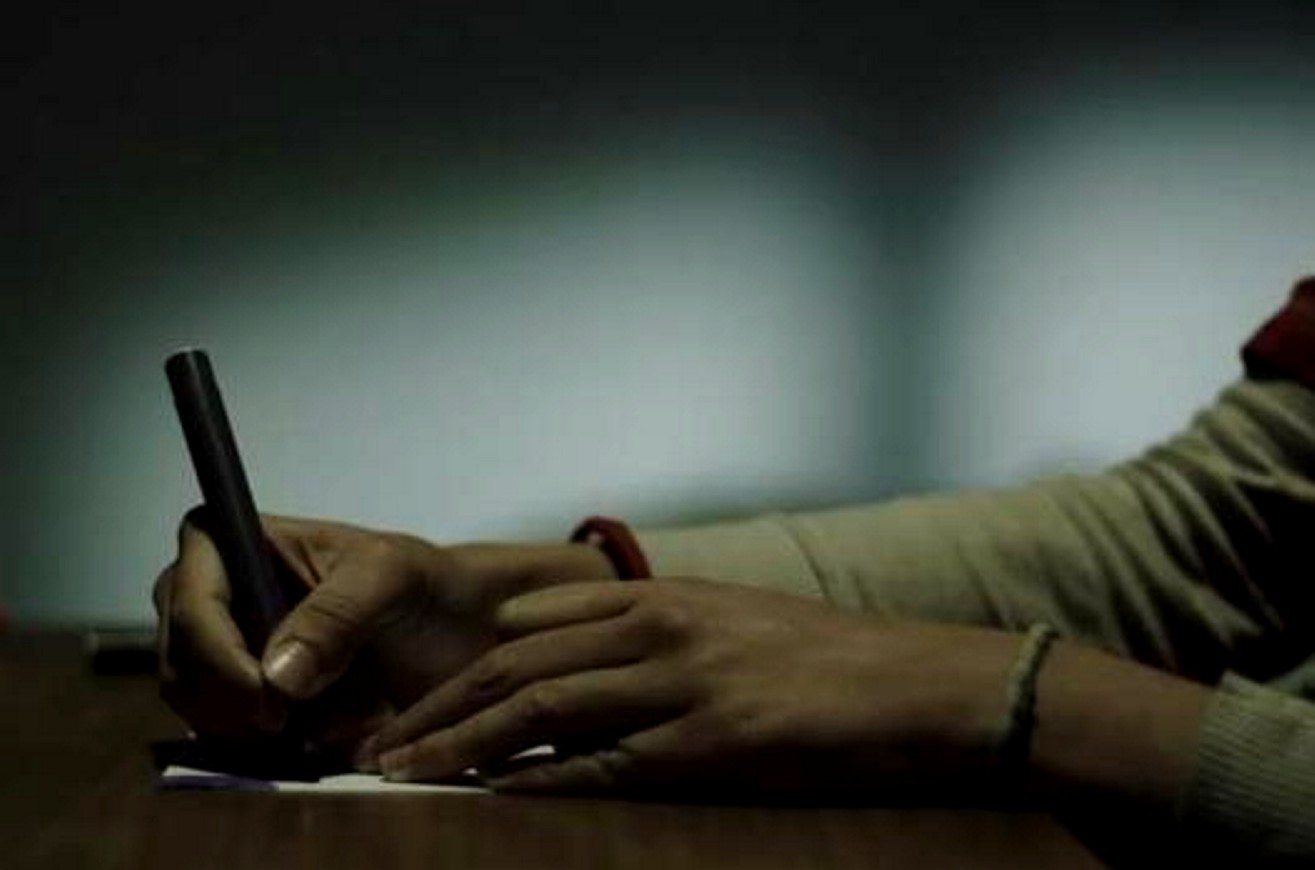
Amanda Knox rarely, if ever, mentions her “˜close friend’, murder victim Meredith Kercher. Perhaps out of her self-proclaimed desire to “˜move on with her life’.
So the recent Hands of Time (H.O.T.) music video The Mistral Blows which was posted on YouTube with a screenplay attributed to the Seattle native is nothing if not astonishing.
Whilst there is some discussion as to whether Amanda Knox wrote the entire screenplay, or a section of it, or whether the screenplay was created through a merging of several versions, the screenplay is clearly attributed to her in the credits that appear on the video.
Crediting Amanda Knox with the screenplay is repeatedly emphasized by H.O.T. themselves who posted multiple Twitter entries:
And this screenplay does Amanda Knox and her claims of innocence in the brutal murder of Meredith Kercher no favours at all.
Although provisionally “˜acquitted’ at the trial of second instance, Amanda Knox still stands accused of a capital crime, aspects of which she seems compelled to continue to portray in her various writings.
The hapless band H.O.T. might be well-advised to disassociate themselves from this endeavour and drop the video like a hot potato. The more-so as they have already burnt their fingers, tampering with the so-far elusive Brand Knox, finding themselves “˜forced to remove [clips of Knox dancing in Capanne] from the file, after a sudden, unexpected and “very strange” last-minute opposition from Amanda’s entourage.’
They state with a hint of bitterness:
The result? A compromise. The image of Knox dancing with carefree abandon in Capanne Prison (easily retrieved from other internet sites) remains, but is obliterated by a large “˜censored’ notice.
The reasons to attempt to disappear this video or, at the very least, any identifiable links with Knox, are abundantly clear to anyone having followed this dreadful case over the last four and a half years.
1) The video is riddled with allusions to the crime itself and features an easily-identifiable Amanda Knox as “˜heroine’ or “˜victim’ as she may now prefer to be seen and depending on how you look at it.
2) Any pre-book-release publicity will potentially devalue the carefully branded and preserved Amanda Knox product.
A cursory look at the video demonstrates the depraved audacity of the writer, a person who simultaneously insists she was found innocent of the crime of murder and of which she still stands accused.
The video features a Knox look-alike ““ recognizable by her clothing - in a prison-cum-house of horrors.
It opens with the heroine sitting down, colouring pictures in a prison cell. Amanda Knox was reported to spend time colouring pictures of her hands whilst in prison.
From there she leaves the cell and embarks on a journey through a range of horrifying experiences, until she finally flees the house but not the prison to which she is eternally condemned.
As she runs through the house of horrors she encounters:
1) Ghost-like figures lurching out at her hinting at the night of Halloween before the murder and the ghouls and demons of the house of horrors both in which the crime took place and in which she is forever imprisoned.
2) A tall, faceless black-haired figure dressed in black carrying an umbrella resembling Meredith Kercher dressed as a vampire on her last night alive, the red belt reminiscent of the fake costume blood and the actual blood spilled the night of the murder.
3) A faceless butcher figure dressed in a blood-stained apron holding a knife, who hands her a maggot-infested apple, reminiscent of the photograph of co-accused Raffaele Sollecito as posted on his Facebook page. The apple is suggestive of the poisoned apple offered by the witch to the innocent Snow White ““
4) Or a subliminal suggestion of Raffaele’s guilt in handing her the infested and poisonous apple “¦.. Remember: she claimed Raffaele may have pressed the murder knife with Meredith’s DNA into her hand whilst she was sleeping.
5) A figure tied to a chair covered in a red cloth hinting of the pools of blood and of Meredith unable to move to defend herself. As she reaches out to lift the red cloth the bound figure screams, sending her running out down staircases and steps and out of the house.
In the same way, witness Nora Cappezzali heard Meredith’s desperate, blood-curdling scream, followed shortly afterwards by running footsteps out of the house of horrors and onto the steel staircase near her home.
The video ends with the Knox look-alike remaining in prison. Both real and imagined.
H.O.T. suggest that the video and screenplay are a means of documenting the tale of the events in Perugia and, of course, Amanda Knox hopes to chronicle the nightmare in which she “˜innocently’ found herself. In so doing, she inadvertently describes the crime and the images, sounds and memories that will seemingly not leave her alone.
Not only are there many references to the crime, but there seems as well a clear jealous obsession with Meredith, given the numerous references and comparisons to Kristian Leontiou’s video Some Say in which Meredith hauntingly starred.
The Knox look-alike emulates Meredith from the Some Say video both in her dress and appearance as well as in her actions. She descends an old staircase, appears in doorways and through arches reminding us of the shots of Meredith and the church of the “˜Some Say’ video.
Emulation is a form of envy. Guilty or innocent, it seems Knox cannot exorcise her memories of the crime, and remains compelled to depict it in screenplays and short stories. Knox is seemingly still jealous of Meredith which had proved her original undoing. Here, in a bizarre reversal of reality, Meredith becomes the foreboding, frightening presence, whereas Knox is the shocked and terrified victim.
At a time when a tough Galati appeal to the Supreme Court and a $4 million book deal are on the table, the memory of Meredith and the crime seem to haunt and obsess Amanda Knox who may reveal a deep-seated need to confess. But while still accused, Amanda Knox cannot afford to engage in such obsessive, confessional activity.
Could this prove to be her final undoing?
Wednesday, May 09, 2012
An Associate Of Knox PR Heavy David Marriot Has Been Bullying Meredith’s Father Online
Posted by Glinda The Good

Yet another example of Curt Knox’s abusive public relations campaign at work.
We have long heard that the PR run for Curt Knox by David Marriott in Seattle controls all the pro-Knox anti-Italy message everywhere. David Marriott unwisely claimed this, in fact, right after Amanda Knox returned to Seattle. See here.
The PR is said to abuse reporters who dont go along, reward those that do, and fan out nasty commenters around the web to post selling points under various false names. It presumably does that to make the movement look spontaneous and big. An expanding but questionable technique which goes by the name astroturfing.
Every month more evidence piles up, suggesting that online comment threads and forums are being hijacked by people who aren’t what they seem.
The anonymity of the web gives companies and governments golden opportunities to run astroturf operations: fake grassroots campaigns that create the impression that large numbers of people are demanding or opposing particular policies. This deception is most likely to occur where the interests of companies or governments come into conflict with the interests of the public. For example, there’s a long history of tobacco companies creating astroturf groups to fight attempts to regulate them.
After I wrote about online astroturfing in December, I was contacted by a whistleblower. He was part of a commercial team employed to infest internet forums and comment threads on behalf of corporate clients, promoting their causes and arguing with anyone who opposed them.
Like the other members of the team, he posed as a disinterested member of the public. Or, to be more accurate, as a crowd of disinterested members of the public: he used 70 personas, both to avoid detection and to create the impression there was widespread support for his pro-corporate arguments. I’ll reveal more about what he told me when I’ve finished the investigation I’m working on.
The Knox PR astroturfing operation now has Meredith’s father John Kercher and his fine new book in its crosshairs, and for some days it has been raining contemptuous abuse. .
Officialdom in Perugia and Rome and the Italian Supreme Court all seem to know that the Knox-Mellases KNEW Amanda Knox was involved in the crime against Meredith almost as soon as they arrived in Perugia, and that they have been trying to cover that up ever since.
The PR scheme had already swung into operation by then, but the Knox-Mellases made the fateful choice to stick with it regardless, instead of maybe more wisely switching off the PR and turning to a good American lawyer to spread the word instead. Curt Knox recently claimed, before Amanda’s “innocent” persona started to implode, that using PR was one of the best choices he ever made.
This image above is of Seth Chandler, the managing director of Axolotl AB, a public relations firm linked to David Marriott’s which does the usual advertising, copy doctoring, social media campaigning, and so on. The image was captured online before it was hurriedly disappeared.
Seth appears to be the same chap caught red-handed the other day propagating the all-too-familiar FOA selling points while sliming the family of Meredith, who is the real victim here. Under an article on Worldcrunch which reported the imminent release of John Kercher’s book “Meredith” Seth Chandler was observed repeatedly posting that John Kercher (and others there trying to explain the truth) should simply STFU..
With only a couple of exceptions, real names of identifiable people are not used by the PR. We’ve seen them, we’ve read them, but this appears to be only the second time (after “Bruce Fisher of New York”) that one of the anonymous PR operatives/contractors has been exposed for what and where he is. Perhaps we might expect a few more.
For four years in the US and the UK, with big money at stake, the operatives have bashed Italy, the Italian justice system, Italian culture, and the Italian law enforcement agencies involved in the case. The operatives have slimed the Scientific Police, the prosecutor Mr Mignini, the prosecutor Ms Comodi, the British press, the Italian press, the Kerchers’ lawyer Mr Maresca, and all the prosecution witnesses. In various postings they have accused many of these people of crimes, an imprisonable felony in the US.
They have bashed the lay judges in the court because they wear their tricolour sashes routinely as a badge of office. They have claimed that this is an anti-American display. They have decried the Italian courtroom because behind the lead judge a crucifix hangs there.
The operatives have thrown mud at anyone they perceive as dangerously surfacing any hard truth about the case. Respected journalists have received exceptional abuse. Any perceived enemy not so much of Amanda Knox herself as the defense narrative of the murder and the legal processes can expect to get roughed up.
So it’s quite a game-changer when Seth Chandler, or “Seth C” as he now wants to be known, the managing director of Axolotl PR, is apparently caught red-handed telling John Kercher to STFU. Seth Chandler has claimed as he tried to wriggle off the hook that “no one paid” him to say STFU, and that anyway PRs would never say such a thing. Really? But the abuse was right there in his name.
Seth Chandler also works for Electrolux. Its competitors are are Dyson, and LG. I wouldn’t imagine that he employs the same tactics for firms, though I haven’t yet checked his Amazon customer reviews.
Shame on Seth Chandler - and on Curt Knox, whose vile temper reverberates throughout this case and some increasingly believe sent Amanda Knox over the top.
Tuesday, March 13, 2012
In Desperation A Council Of War? All Of The Sollecito Family Suddenly Hop On Flights To Seattle
Posted by Our Main Posters
What’s going on here?
Sollecito has been in Los Angeles working on a book with a shadow writer. His father has said very firmly several times that Sollecito and Amanda Knox are through. Finito.
But Italian media are suddenly reporting that Sollecito is hopping on a plane for Seattle. And that his family, seemingly in a panic, is high-tailing it after him.
Are both families really nervous that the two will get back together for better or (probably) worse? Or is this a council of war between the Sollecitos, Knoxes, and Mellases?
Actually, this meet-up is no surprise at all to the close case watchers in Italy. They were wondering how else the two families and their loose-cannon kids could make it through the minefields ahead. They seem to be facing a five-problem agenda.
Problem One For Discussion
The most immediate problem for the two families is described in the box at the top of the page here. Curt Knox and Edda Mellas are headed for a civil trial brought by aggrieved police, seemingly without an ounce of proof on the family’s side other than any testimony from Amanda Knox herself under cross-examination (for the first time) on the witness stand.
Almost simultaneously the Sollecitos (five of them) are headed for a CRIMINAL trial for illegal release of evidence and attempted political interference which could eventually land them in prison. The two charges against them seem pretty cut and dried with hard evidence on film and audio tape to which they have not so far offered even a sliver of a rebuttal.
Problem Two For Discussion
The second problem is that officialdom in Rome and Perugia seem to almost universally believe that the two families have all along known that both of their kids were somehow involved in Meredith’s murder. Some of the suggestive evidence is out there in broad daylight and we suspect that prosecutors may be holding back more.
Contrary to the claims of Amanda Knox’s supporters that prosecutors maliciously threw the book at the defendants and their tribes to somehow save face, the truth is that prosecutors stopped short of taking all of the possible actions open to them.
For example they turned down an offer by Guede to testify fully at first trial (after which he was beaten up in prison and reduced to a jelly which must have pleased him no end) and they seem to know more than they are saying about hard drugs - Knox apparently had a cocaine dealer’s number in her mobile phone. Also they chose not to investigate any of the rumors and backstories in Seattle which US prosecutors might well have done.
In the Sollecito case they may have felt they had no choice but to proceed. The released evidence tape showing Meredith’s naked body was repeatedly broadcast nationally, and the Carabinieri and Rome police are both involved in the political meddling component. Bari prosecutors will of course be trying the case.
Problem Three For Discussion
The third problem is that Judge Hellman has done the families no favors. On the day after he issued his verdict he contradicted himself in an unhelpful way. Then he published an emotional report explaining the surprise outcome of the first appeal which is short on logic and correct law, and full of innuendo and bizarre intellectual leaps.
PMF and TJMK will be posting a careful translation of the Hellman report with a full analysis of its weaknesses soon.
Problem Four For Discussion
Chief Prosecutor Galati has already filed a formidable Supreme Court appeal against the first appeal outcome, which argues in part that (1) the scope of Hellman’s report was illegal overreach; and that (2) his appointing of the two independent DNA experts was more illegal overreach.
As it has done in many other cases in the past, the Supreme Court might send the outcome of the first appeal back to Perugia to be corrected just as soon as it reads that.
And if it reads further, it cannot help but note that Judge Hellman has brushed right by hundreds of questions that still remain open. The Supreme Court has ALREADY rejected Judge Hellman’s hypothesis that Rudy Guede broke in and attacked Meredith all by himself. It has sided with Judges Massei and Micheli that there were actually three perpetrators.
Problem Five For Discussion
The blockbuster book offers required to pay for all this new legal action seemed very short on due diligence in the context of the calunnia minefield that Italian law creates for writers and publishers. Did the writers and publishers even know about that?
Past explanations and alibis from Knox and Sollecito have repeatedly contradicted one another’s. At one point, each seemed to be accusing the other of the crime. At trial, Knox seemed to want to talk all the time, while Sollecito barely ever said a word. Now we are seeing the exact opposite. Sollecito seemingly cannot keep quiet to save himself, while Knox seems petrified and terminally tongue-tied.
Their books are going to need to be line-by-line supportive of one another, and they will be disasters if they rely on slamming Italian officials and moping (Knox’s apparent angle) or on denying all the hard evidence and moping (Sollecito’s apparent angle).
There will be cancellation clauses in the publishers’ fine print, and what they are we may all soon find out. From the two families’ point of view, this entire landscape must look very nasty and foreboding. An ill-advised legal and PR strategy has led them into this minefield.
Not surprising that they now find a sudden need to chat.
Monday, February 20, 2012
HarperCollins: Perhaps This Explains Why Jonathan Burnham Was Inspired To Take Such A Seeming Risk
Posted by Peter Quennell

HarperCollin’s parent company News Corp itself continues to be a major news items, especially in the UK.
Rupert Murdoch’s News Corp vehicles have had a history of racy reporting and and right-wing-party support, and now both are rather on the outer. The investigations in London into phone tapping and bribing of police for stories seem only to be getting worse.
As a result NYC-based News Corp and its minions, perhaps including HarperCollins (Jonathan Burnham is one of Rupert’s talented British imports to New York) might be making some risky or unwise moves.
Okay. Back to the stock charts once again to see what the collective voting wisdom of informed investors may be telling us about this.
News Corp cannot be compared directly to Lagadere the parent company of Hachette which is soon to publish John Kercher’s “Meredith” as the Paris-based Lagadere is not listed on the New York exchange,
So here above we show the stock for Penguin Publishing’s parent company Pearson instead. It is a good surrogate as Lagadere and Pearson are the world’s two most successful and fastest-growing publishing groups.
What does the chart above tell us? (Click it for a larger version.) The green curve is the Dow Jones index, which is the stock exchange’s large-company average.
- Over the five years shown Penguin’s parent Pearson (red curve) is UP around 20% compared to the average.
- Meanwhile HarperCollins’s parent News Corp (blue curve) is DOWN an amazing 30 percent compared to the average.
That 30 percent down represents a drop of over FIFTEEN BILLION DOLLARS in five years in the market value of the parent company. Very worrisome for the hard-pressed Mr Murdoch and the increasingly edgy News Corp stock holders.
And who knows? Maybe it helped inspired Mr Burnham in his office a few blocks away (he surely owns the News Corps stock and wants the whole company to gain) to go for broke on the Knox book with $4 million down.
Did any of the main media reporting on the book (over 200 hits on Google News) happen to mention this?!
Sunday, February 19, 2012
HarperCollins: A Commendably Balanced Report By The UK Daily Telegraph’s Iain Hollingshead
Posted by Peter Quennell
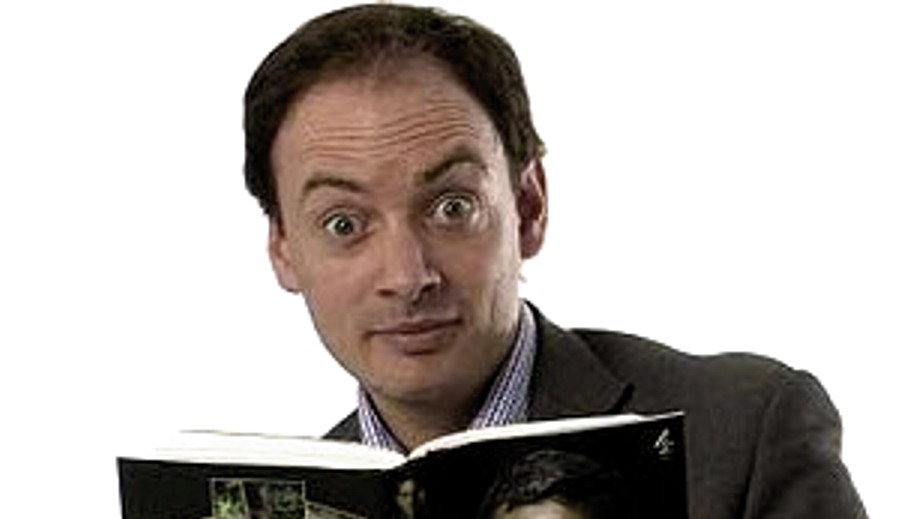
Iain Hollingshead has written a fair and balanced piece in the Daily Telegraph. It contains quite a few notes of caution for HarperCollins:
1) Iain Hollingshead has this restrained Anne Bremner comment from her side though it fails to mention the million-dollar-plus PR campaign that has so many people addled on the real evidence; a pity Iain Hollingshead didnt press her.
“No one here has lost sight of the enormity of the fact that Meredith was killed,” says Anne Bremner, a Seattle-based lawyer and a spokeswoman for the Friends of Amanda Support Group. “But there’s widespread belief in Amanda’s innocence. And when something horrible happens, people all over the world are interested in how you get through it.”
Something horrible happened to Meredith too, of course - and she didn’t get through it. Anne Bremner might press Amanda Knox to make sure to answer in her book the several hundred open questions.
2) Then Iain Hollingshead quotes a London agent who is saying, like other agents and publishers, that HarperCollins sure seems to have taken on a risky publishing venture:
A positive balance sheet is far from guaranteed, however. “I think it’s very risky money,” says Ed Victor, the London-based literary agent whose clients range from Keith Richards to Alastair Campbell and Frederick Forsyth. “But all advances at that level are risky. A lot will depend on whom they hire as the collaborator. It has to be written well.”
3) Also Iain Hollingshead points out what many others have previously pointed out which is that that Knox is not really known for good prose or interesting writing:
HarperCollins hasn’t released the name of the ghostwriter, but one imagines they will have their work cut out. Not only is the book scheduled for publication early next year, they will also have to tread the fine line of polishing Knox’s prose without losing her voice. Although Knox is said to have harboured long-standing dreams of becoming a writer, extracts from her prison diaries ““ some of which were given to investigators in an attempt to clear her name and were later leaked to newspapers ““ suggest that she has a little way to go. One poem read: “Do you know me? Open your eyes and see that when it is said I am an angel, or I am a devil, or I am a lost girl, recognise that what is really lost is: the truth!”
By the way, Mr Burnham of HarperCollinws is widely quoted as saying that Amanda Knox’s side of it is the only one still to come out. He seems to think that her side of it is still a mystery, and that the world is holding its breath.
Really?!
She seems to be one of the most widest quoted perps or suspected perps or non-perps in all history. In fact, she talked so much in the early days that her own lawyers had to publicly caution her to stop piling wrong explanations on wrong explanations.
There are her letters and her emails and her diaries and her notes to police and prosecutors. Plus long quotes from her in books by for example Rocco Girlanda. Plus her two full days on the witness stand. Plus half a dozen major statements to the trial court and appeal court. Plus a few hundred quotes from her family on her behalf. Plus her whole raft of alibis.
Often (when her parents and lawyers are not shushing her) she seems to be digging herself in deeper. Which elements of her story does Mr Burnham think we are all waiting for?
4) Also (although Iain Hollingshead fails to mention John Kercher’s book due in April and may not know about it) he points out that Meredith is the real victim in this case and a very sympathetic one especially in the UK.:
In the British market, Knox’s book will face far greater challenges than the quality of her ghosted prose. “I don’t think the book will be huge here because a lot of British sympathies are with the British victim,” says Victor.
5) Also Iain Hollingshead points out that when there is a sympathetic real victim there is little evidence that the perp or framed perp (dont they all claim they are framed?!) sells a lot of books:
The interest in the O”‰J Simpson case, for example, did not lead to good sales for his book, If I Did It. And while many pundits are comparing Knox’s book to Jaycee Dugard’s A Stolen Life, the memoir of the Californian girl held against her will for 18 years which has sold more than a million copies since last July, Victor thinks the comparison unhelpful. “She was the victim of a crime, not the putative perpetrator of a crime,” he says. “And that’s a big difference. You could say she was the victim of a miscarriage of justice ““ but so are a lot of people.”
6) And Iain Hollingshead shows us that Andrew Gumbel, Sollecito’s ghost writer, is pretty uninformed on the case.
We will now be able to watch him having a tough time writing on the hard evidence and the fair Italian system and the real character of the druggie loner Sollecito. Assuming that Mr Gumbel hasn’t made up his mind:
“The book will be a lot of things: a love story, a harrowing description of an innocent young man in prison, a full-blooded Italian family drama, and a legal thriller,” says Gumbel. “But these are not the only reasons I got involved: what happened to Raffaele and Amanda was inexcusable and unconscionable and my intention is to get to the bottom of exactly why they were targeted.”
Gumbel denies he’s cashing in on a brutal murder. “I know that, in Raffaele’s case, no day has gone by without him thinking of Meredith and the hell her family has gone through,” he says. “We are not ‘cashing in’ on her death, but rather illuminating the way the Italian police and judiciary compounded the tragedy by throwing two young people into prison for no good reason. Their stories ““ both their stories ““ deserve to be heard and I believe it is important that they are.”
Cashing in on Meredith’s death? No, the thought never even occurred to us. Image of the accusatory and under-researched Mr Gumbel below. Keep on his tail Mr Hollingshead.
7) We would have liked Iain Hollingshead to touch on the risks of calunnia for HarperCollins, but to be fair to him it is doubtful he knows what in the very fair Italian system that defense for those unfairly attacked means.
Mr Burnham and Mr Gumbel seem to be setting themselves up nicely to find out.
[Below: Sollecito ghost writer Andrew Gumbel; and Sollecito book agent Sharlene Martin]

Friday, February 17, 2012
Were Prospective Knox Publishers Given The Full Score On The Likely Legal Future Of This Case?
Posted by Peter Quennell

[Above: the seemingly hornswoggled Jonathan Burnham and Claire Wachtell of the HarperCollins house]
One publisher who passed on the Amanda Knox book then came here to read and told us he was rather shocked.
All the publishers going in to the auction were apparently not briefed by the Knox huckster team about the legal minefield this case still continues to represent. It may not have mattered to HarperCollins of course. It was HarperCollins that published OJ Simpson’s notorious “If I Did It” and they seem to have come out ahead.
One of the quirky outcomes of the Simpson venture the Amanda Knox team might like to draw a lesson from is that the “If I Did It” book (written by a ghost writer for Simpson, and as one Amazon reviewer said “chock full of omissions”) directly fueled the public anger that helped to put Simpson behind bars for a long time.
Typical of the hyper-cautious Italian system, this case is passing through three automatic phases like a three-act play. The Knox team can beef now about harassment and double jeopardy, but they have filed their own Supreme Court appeal, and it is written into the Italian constitution that no verdicts and sentences that are appealed are final until the Supreme Court signs off.
Act One
Act One started early in 2009 three months after Guede’s trial and we all saw as reported here on TJMK a very speedy and precise presentation of the prosecutions’ case. This was followed by the spectacle of Amanda Knox doing herself considerable harm in her two days on the stand. Thereafter through autumn and well into winter 2009, a weak and faltering defense was presented, with several court days simply cancelled because the defense could think of nothing more to say.
Judge Massei’s jury then quickly came to a unanimous verdict and he wrote up the reasons for it in an excellent 425-page report. He differed in only one major respect from Judge Micheli who in October 2008 concluded that Amanda Knox had organized and led the pack against Meredith and that Rudy Guede was unwittingly or accidentally drawn in to her torture and murder. (He still handed Guede 30 years.)
Judge Massei didnt cover the Rudy Guede evidence in nearly the same depth as Judge Micheli (Guede was only briefly in the Massei courtroom, and because Mr Mignini would not do a deal he barely spoke). In rather a stretch, Judge Massei argued that Guede set the escalation in motion which resulted in Meredith’s death. Few of us believe that.
UK and US lawyers have told us that under US and UK rules it is very unlikely that any judge would have then allowed the case to go to appeal. Knox and Sollecito would have served out their time and possibly emerged much better off for it - you can see the ugliness flowing back into them now..
Act Two
Act Two in 2010-11 saw the playing field becoming increasingly tilted. Mr Mignini happened to catch on tape a Florence prosecutor lamenting that the Monster of Florence cabal for which Doug Preston is such an eager beaver was tying his hands. The Florence prosecutor then sought to get his own back by taking Mr Mignini to court.
All sorts of amateur second-guessers on the evidence now got into the act, and few outside Italy any more had a firm command of the actual hard facts. It is rumored that Judge Hellman may have had a bias even before he ever got involved with the case. Mention of Meredith was almost nowhere to be found, and there was a constant drumbeat for Sollecito and Knox kept alive by their families and the US media and the MP Rocco Girlanda.
Helping the defenses was that soon after Meredith’s death the defenses played one huge trick. They failed to show up when Dr Stefanoni did her DNA tests. That then allowed them to impugn and slur her and her work with no hard evidence to hand. This rose to a crescendo when Judge Hellman’s two under-qualified consultants reported at appeal.
Amanda Knox still ended up being handed three years in prison, but with time served Judge Hellman released the two “young people” which was a verdict that to very few informed Italians made sense.
Act Three
Act Three starts with legal terrain that looks very different. Dr Galati has set the stage for a very, very tough third act, and he is making quite sure this time that the playing field is not tilted by any further monkey tricks. No wonder the publisher mentioned up top is surprised though. .
- NOT ONE non-Italian media source has made it clear that the Umbria regional prosecution office has a very special and prestigious status in Italy as the prosecution office that takes on cases against officials and politicians in the Rome government, so that the Rome police and prosecutors avoid conflicts of interest..
- NOT ONE non-Italian media source has explained who Dr Giovanni Galati really is. He could rightly be described as the most experienced and respected and capable of all Italy’s 24 regional chief prosecutors. He was a Deputy Attorney General with the Surpreme Court in Rome before his assignment just over a year ago to Umbria, and unlike the main Knox and Sollecito lawyers he knows the internecine Supreme Court rules and ways of addressing Italian law like the back of his hand.
- NOT ONE non-Italian media source has explained what we have reported in the four posts just below: that Dr Galati is stating that Judge Hellman BROKE ITALIAN LAW in two make-or-break respects. Judge Hellman is seen to have extended the appeals court’s terms of reference in ways that he is forbidden to do. And he introduced the DNA consultants which (as Mr Mignini several times argued) he was also forbidden to do.
Amanda Knox and Raffaele Solecito now face the fights of their lives. The last thing they need in this shark tank is a couple of biased self serving books “chock full of omissions” and anti-Italy smears.
They will almost certainly have to get up on the stand under oath and cross-examination and try to explain their scenario in a context where they each have contradicted and even accused one another. Their lawyers may be okay at trial or first appeal level but they are very outclassed by Dr Galati at this third level and it would seem the Knoxes, Mellases and Sollecitos would be best served to find new (very expensive) Supreme Court teams
Italians on the whole are angry and humiliated at the ill-argued first-appeal outcome. Judge Hellman seemed to show biases that he really should not have. Dr Mignini is back to being in the clear in his case as it was ruled (rightly) that the Florence prosecutors did not have jurisdiction over him. The Supreme Court took a very firm position in December 2010 that Rudy Guede did not act alone. The defense star witnesses Alessi and Aviello that might help accomodate to this have imploded, and both may face trials of their own.
A pretty grim portrait of Amanda Knox both prior to Meredith’s murder and while Knox was in Capanne prison is not hard to find in Perugia from multiple sources. If a devastating “Real Amanda Knox” book is not inspired by the HarperCollins book, we will be surprised, and it could sell more than hers. And if the slightest defamation about anyone in Perugia appears in the AK book, then HarperCollins will have the great joy of finding out what “calunnia” means.
President Obama and Senator Cantwell both have tough elections on their hands and Hillary Clinton and the Rome Ambassador David Thorne (an Obama political appointee) will need to be in ultra-careful mode this time around. Amanda Knox and her parents and Sollecito’s parents all face separate trials coming up. Rabid books will not help any of them there.
And in April the likeable book “Meredith” by her father John will be published - by a global publisher (Hachette) five times HarperCollins’s size.
Wednesday, February 15, 2012
Weighing The Ten Points On Which The Perugia Chief Prosecutor’s Supreme Court Appeal Is Based
Posted by brmull

[Above: the Supreme Court of Italy seen from the south-east across the River Tiber]
The Chief Prosecutor and Deputy Chief Prosecutor of Umbria base their formidable appeal on ten points repeated here from ZiaK’s excellent translation below.
The reasons for the appeal to Cassation which Perugia’s General Prosecution presented today against the acquittal verdict of Amanda and Raffaele are based on ten points of the second-level verdict.
The first is the lack of grounds for the decision, in the decree of 18 December 2010, to allow the forensic testimony/expert witness in the appeal judgement.
The second, in contrast, concerns a contrary decision: the decision to not allow a new forensic investigation requested by the prosecution at the end of the ruling discussion. In the appeal to Cassation it is written that the Appeal Court’s rejection reveals “contradictoriness/contrariness and demonstrates manifest illogicality in the grounds for the judgement/reasoning report”.
The other points deal with the decision by the Appeal court of Assizes of Perugia to not hear the witness Aviello, also the definition of “unreliable” [in the Hellman Report] with reference to the witnesses Roberto Quintavalle and and Antonio Curatolo, also the time of death of Meredith Kercher, also on the genetic investigations.
As well as the analyses of the prints and other traces, also the presence of Amanda and Sollecito in via della Pergola, also the simulation of a crime [the staged break-in], and also the exclusion of the aggravating circumstance of the crime of “calumny”.
1. I agree that the appointing of the independent experts was unjustified, because they were essentially just another opinion, a sort of tie-breaker, applying 2011 standards to 2007 evidence, who were revealed to have pre-existing biases about the questions posed to them.
Independent experts should be a piece of evidence, not a final arbiter. I know the Kerchers opposed the appointment of these experts (I don’t know about the prosecution) so clearly they weren’t a consensus choice, as is preferred whenever independent experts are employed.
2. I agree that if Conti and Vecchiotti were allowed to judge the scientific police by 2011 standards, then the court should have allowed testing using highly sensitive 2011 technology. Furthermore Dr. Stefanoni was left to defend her work against the academic experts, without any back-up from Dr. Novelli who is more than a match for the independent experts in terms of credentials.
3. I’m on the fence as to whether the court should have recalled Aviello to discuss why he had recanted his testimony. I don’t know what the legal procedure is when a witness recants while the trial is still underway.
4. I strongly agree that the decision to recall the man in the park, Curatolo, and then determining that the old man’s memory was unreliable four years after the fact, was completely inappropriate. Curatolo’s testimony at the first trial was more than adequate. Nothing was learned from this exercise except that his memory has become worse with time (whose hasn’t?) and that he subsequently got in trouble with the law, which is overly prejudicial.
5. If the court insisted on recalling Curatolo to try to assess his reliability, they should have done the same for the store owner Quintavalle. Instead he was deemed unreliable based on a cherry-picked selection from his 2009 testimony.
6. On the time of death, I’m one of those who believe Hellmann got it right, but it has no bearing on the defendants’ guilt or innocence, since they have no alibi for either time. I look forward to the prosecution’s argument on this.
7. I agree that Hellmann’s decision to accept the defense explanation for the footprints was arbitrary and not justified by his motivations report.
8. The luminol traces in Filomena’s room were improperly determined to be footprints. They were then lumped in with the footprints in the hall without any separate attempt at explanation.
9. I agree that the Court’s determination that the defendents would not lie about being at the cottage, simply because they were “good kids” is outrageous. (In the U.S. you can’t use character evidence to decide innocence or guilt, and doing so would mean a mistrial. I’m not sure about the situation in Italy.)
10. I agree Hellmann’s explanation for the simulation of a crime was a sham, in which he accepted all of the defense arguments and showed no curiosity at all about whether this scenario could actually happen. The court had clearly made up its mind about the case already and decided to just shove the staged break-in, a crucial part of the case, under the rug.
***
*The prosecution also wants to add “aggravating factors” to the charge of calumny. This is a freebie. I don’t know if it will have any bearing on the appeal.
**The fact that Hellmann seems to have applied the “reasonable doubt” standard to individual pieces of evidence, when this should only apply to the case as a whole, seems like a huge basis for appeal. I’m glad to see the prosecution bringing this up.
Perugia’s Excellent Umbria24 Posts Details Of Dr Galati’s Extremely Tough Supreme Court Appeal
Posted by Peter Quennell

Italian lawyers are already remarking that Dr Galati’s appeal as summarised below is as tough as they ever get.
In their view the Hellman report reads more like a defense brief than a balanced appeal-court outcome in a murder trial. Both judges were put on the case on mysterious instructions from Rome, suggesting that the minister of justice had perhaps been leaned on - the judge pushed aside was extremely annoyed.
Both Judge Hellmann and Judge Zanetti, while undeniably good judges in their own fields (business and civil), are vastly less experienced at criminal trials than either Judge Micheli or Judge Massei. The entry in the Italian Wikipedia describes them thus.
Although the Assize Court of Appeal was to be chaired by Dr. Sergio Matteini Chiari, Chairman of the Criminal Division of the Court of Appeal in Perugia, in circumstances not well understood Dr. Claudio Pratillo Hellmann, who chairs the Labor Chamber of the Court, has been called on to preside over the appeal court,
The judge to the side of the main judge, Dr. Massimo Zanetti, came from the Civil Section, and both had had limited experience with criminal trials both rather remote in time (only the cases of Spoleto and Orvieto).
Judge Hellmann’s announcement of the verdict on the night was very odd, suggesting he had been outnumbered and was embarrassed. Remarks he made the next day seemed to confirm that. The weak sentencing report is said to be not his work, and was written by Judge Zanetti.
The Supreme Court of Cassation could insist on a complete new appeal trial or a partial new trial in Perugia if it accepts any of Dr Galati’s arguments at all. His appeal statement appeal is in three tiers, and a reversal could be ordered at any tier..
1. The Hellmann Court’s wide scope was illegally far too wide
Italian judicial code is very clear on this. They MUST stick to just the appealed items and not wander all over the map. Judge Zanetti was quite wrong at the start to declare that everything was open except the fact that Meredith had been murdered.
2. The DNA consultancy by Stefano Conti and Carla Vecchiotti was illegal
Defenses had every chance to attend the Scientific Police testing the first time around. It was a slippery dodge to skip those tests and then slime them. They had every opportunity at trial to throw aspersions. They are not meant to shop around.
3. There are many problems of wrong logic, evidence, and witnesses
The Massei trial sat through weeks and weeks of skilled prosecution presentations of the evidence including the forensic evidence and the many witnesses. The Hellman court got to see almost none of this and heard mostly from the defense.
This translation is from Umbria24 by our main poster ZiaK.
Meredith case: the prosecution appeals to Cassation: the acquittal verdict should be “nullified”.
For the Chief Magistrates of the [Umbria] Prosecution, “it was almost exclusively the defence arguments which were taken heed of”
By Francesca Marruco
The first-level conviction verdict was “complete and thorough” while the verdict of the second-level is “contradictory and illogical”. For this reason, the General Prosecution of Perugia asks the Cassation to revoke or invalidate it.
“We are still extremely convinced that Amanda and Raffaele are co-perpetrators of the murder of Meredith Kercher” said the Chief Prosecutor of Perugia, Giovanni Galati and the Deputy Chief Prosecutor, Giancarlo Costagliola.
Verdict that should be revoked
“The second-level verdict should be annulled/revoked…. There are precise reasons for revoking it”, Mr Galati went on to say. In the Hellman reasoning report on the verdict with which the second-level judges acquitted the ex-boyfriend and girlfriend “there are so many errors, and many omissions. There is inconsistency in the grounds for judgement, which brings us to nothing.”
“It is as if they had ruled ex novo [anew] on Meredith’s murder” added the Deputy Prosecutor, Giancarlo Costagliola, “basing their decision solely on the arguments of the defence.”
“Normally the appeal judge evaluates the reasoning procedure of the first-instance judge and compares it to new elements. But this one missed that out altogether: there is no comparison between the checks carried out in the first and second instances. Only what was carried out during the appeal was evaluated.”
Only defence arguments were taken heed of
For the magistrates, in fact, the second-level judges “took heed, almost exclusively, of the arguments of the defence consultants or the reconstruction hypotheses that were largely to the benefit of the defense theses”.
The prosecutors who authored the appeal [to Cassation] also criticized the “method used”. “The first-instance verdict”, they wrote, “was summarized in just a few lines”,
“The verdict [which we] challenge completely ignored all the other aspects which corresponded with the accusation’s hypothesis, all the aspects which, on the contrary - as was seen in the reasoning report of the first-instance verdict - had been rigorously pointed out and considered by the Assizes Court [trial court] in its decision.”
“In examining the individual [items of] evidence, the challenged sentence has fallen into consistent procedural error in the weaknesses and evident illogicality of the grounds for its decision.”
Prejudice by the two appeal judges
For the General Prosecution magistrates, the second-level [first appeal] judges appear to have shown “a sort of prejudice” with the “infelicitous preamble of the judge [the author], who is supposed to be impartial”, when he declared that “nothing is certain except the death of Meredith Kercher”, which to the others [Mr Galati and Mr Costagliola] is nothing more than “a resounding preview/forecast of the judgement” and a “disconcerting” affirmation.
The ten points of the appealThe reasons for the appeal to Cassation which Perugia’s General Prosecution presented today against the acquittal verdict of Amanda and Raffaele are based on ten points of the second-level verdict.
The first is the lack of grounds for the decision, in the decree of 18 December 2010, to allow the forensic testimony/expert witness in the appeal judgement.
The second, in contrast, concerns a contrary decision: the decision to not allow a new forensic investigation requested by the prosecution at the end of the ruling discussion. In the appeal to Cassation it is written that the Appeal Court’s rejection reveals “contradictoriness/contrariness and demonstrates manifest illogicality in the grounds for the judgement/reasoning report”.
The other points deal with the decision by the Appeal court of Assizes of Perugia to not hear the witness Aviello, also the definition of “unreliable” [in the Hellman Report] with reference to the witnesses Roberto Quintavalle and and Antonio Curatolo, also the time of death of Meredith Kercher, also on the genetic investigations.
As well as the analyses of the prints and other traces, also the presence of Amanda and Sollecito in via della Pergola, also the simulation of a crime [the staged break-in], and also the exclusion of the aggravating circumstance of the crime of “calumny”.
Missing assumption/acceptance of decisive evidence
In the appeal to Cassation there is also mention of the “missing assumption/acceptance of a decisive proof”
In other words, of that proof [presented at trial court] which consisted of “the carrying out of the genetic analysis on the sample taken from the knife by the experts appointed by the Court during the appeal judgement, who did not carry out the analyses of that sample, thus violating a specific request contained in the [orders given to them] when they were assigned to the expert-witness post”
“In the second-level [Hellman] verdict”, the magistrates said, “the judges sought to refer to this in their own way, by speaking of an “experimental method” by which these tests/checks could be carried out.
But this is not the case”, said Deputy Chief Prosecutor Giancarlo Costagliola: “Dr Novelli [the prosecution’s DNA consultant at appeal] spoke of cutting-edge technology, not of experimental methods”.

